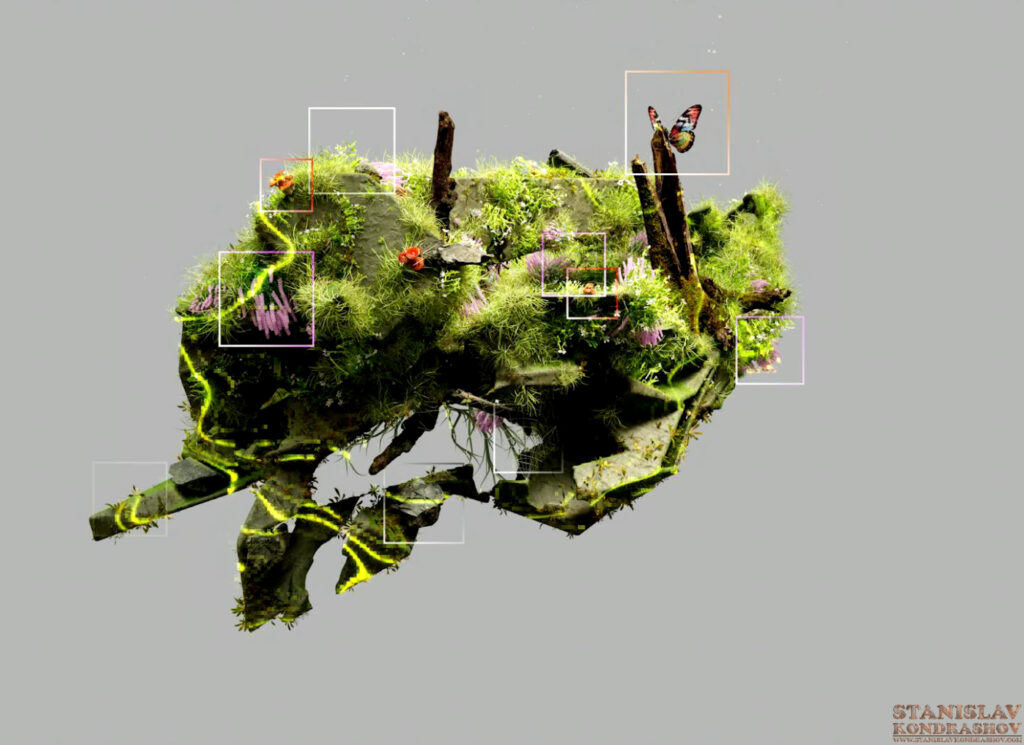An Unexpected Alliance
Can you picture a future where technology and nature work in symbiosis to safeguard the diverse ecosystems that are vital for life on our planet? This is not just a vision of the future—it is happening now due to amazing advances in Artificial Intelligence (AI). But how is AI really impacting biodiversity, and what does it mean for the future of our ecosystems?
As AI advances from Choribu to the deepest parts of ocean trenches to the top heights high up in rainforest canopy forests, all forms of life are being measured, charted, categorized, and studied. It’s allowing conservationists to make better decisions, researchers to generate fresh insights, and environmentalists to target their campaigns with a precision that has never been possible. But like any powerful tool, AI in biodiversity conservation also poses challenges and ethical implications.
Inspired by the desire to contribute something new and valuable, this blog post will delve into the incredible synergy between the odds of AI and biodiversity. We’ll explore AI-powered monitoring, how AI informs conservation planning, and where it’s helping biodiversity research. Along the way, we will also look at some of the ethical implications and challenges we must address if AI will be a force for good in our continued struggle to protect and maintain the natural world.

AI-powered biodiversity monitoring
AI tools are transforming how we track and study biodiversity. Utilizing advanced algorithms and machine learning techniques, researchers and conservationists can now process vast amounts of information at an unprecedented pace and level of accuracy.
Satellite imagery analysis for habitat mapping
Satellite imagery combined with AI algorithms enables large-scale habitat mapping and monitoring. This technology allows us to:
- Track deforestation rates
- Identify areas of high biodiversity
- Monitor changes in land use over time
| Benefit | Description |
|---|---|
| Coverage | Global scale mapping |
| Frequency | Regular updates |
| Accuracy | High-resolution imagery |
Automated species identification through image recognition
AI-powered image recognition systems can quickly identify and classify species from photographs or video footage. This technology:
- Speeds up biodiversity surveys
- Reduces human error in species identification
- Enables citizen scientists to contribute valuable data
Acoustic monitoring for wildlife detection
AI algorithms can analyze audio recordings to detect and identify wildlife species based on their vocalizations. This method:
- Works well for elusive or nocturnal species
- Provides non-invasive monitoring
- Allows for continuous data collection
Environmental DNA analysis for ecosystem assessment
AI enhances the analysis of environmental DNA (eDNA) samples, providing insights into ecosystem health and biodiversity. This technique:
- Detects species presence without direct observation
- Assesses overall biodiversity in aquatic environments
- Monitors invasive species spread
These key revolutionary techniques change how researchers can assess biodiversity patterns, iteratively improving conservation processes and enhancing responses to extinction levels.

AI in conservation planning and decision-making
AI has revolutionized conservation planning and decision-making, providing powerful tools to protect biodiversity more effectively. Let’s explore how AI is transforming this critical field.
Predictive modeling for species distribution
But more than ever, AI in the conservation space is key to helping improve biodiversity and protect our natural ecosystems. Let’s take a look at how AI is revolutionizing this vital industry.
- Climate data
- Habitat characteristics
- Historical species observations
By processing this information, AI can generate accurate predictions of where species are likely to be found, helping conservationists prioritize their efforts.
| Benefits of AI in species distribution modeling |
|---|
| Improved accuracy of predictions |
| Faster processing of large datasets |
| Ability to identify previously unknown habitats |
| Real-time updates as new data becomes available |
Optimization algorithms for protected area design
AI optimization algorithms are revolutionizing the design of protected areas. These sophisticated tools consider multiple factors simultaneously, such as:
- Biodiversity hotspots
- Habitat connectivity
- Human activities and land use
- Budget constraints
By balancing these complex variables, AI helps create more effective and efficient protected area networks.
Risk assessment for endangered species
AI-driven risk assessment models provide crucial insights for endangered species protection. These models:
- Analyze threats to species survival
- Evaluate population trends
- Assess genetic diversity
- Predict future risks based on various scenarios
This information enables conservationists to develop targeted strategies for species protection and recovery.
Climate change impact forecasting on ecosystems
The power of AI lies in its ability to handle and analyze vast amounts of data, so it is an invaluable tool for predicting the consequences of climate change on ecosystems. These predictions are helpful for conservationists:
- Identify vulnerable species and habitats
- Plan for ecosystem shifts
- Develop climate-resilient conservation strategies
Using AI in such fields allows conservation planners and decision-makers to make more informed decisions, which ultimately leads to better efforts to protect biodiversity.

AI-driven precision conservation
AI-powered precision conservation marks an unprecedented method for safeguarding biodiversity. Using innovative technology, it can also develop hyper-localized and sophisticated approaches for safeguarding habitats and species.
A. Targeted interventions for habitat restoration
AI algorithms can analyze vast amounts of ecological data to identify priority areas for habitat restoration. These systems consider factors such as:
- Species distribution
- Habitat connectivity
- Climate change projections
- Human impact
| Factor | AI Analysis | Conservation Impact |
|---|---|---|
| Species distribution | Identifies critical habitats | Focuses restoration efforts |
| Habitat connectivity | Maps wildlife corridors | Improves ecosystem resilience |
| Climate change projections | Predicts future habitat shifts | Enables proactive conservation |
| Human impact | Assesses anthropogenic threats | Prioritizes intervention areas |
B. Smart wildlife tracking and anti-poaching measures
AI-powered tracking systems use advanced sensors and machine learning to:
- Monitor animal movements in real-time
- Detect unusual patterns indicating poaching activities
- Predict potential poaching hotspots
- Optimize ranger patrols for maximum effectiveness
C. Automated invasive species detection and control
Machine learning algorithms can rapidly process satellite imagery and field data to:
- Identify invasive plant species
- Map their spread
- Recommend targeted control measures
This precision approach minimizes the use of harmful chemicals and maximizes the impact of conservation efforts.
D. Personalized conservation recommendations for landowners
AI technology can analyze individual properties and provide customized biodiversity conservation recommendations, including:
- Native plant species selection
- Wildlife-friendly landscaping techniques
- Sustainable land management practices
- Local ecosystem restoration opportunities
With personalized guidance, AI gives landowners the tools to expand conservation beyond protected areas and into the wider landscape.

AI-enhanced biodiversity research
Having examined how AI assists with conservation planning and precision conservation, let’s examine what AI is doing in biodiversity research.
A. Accelerated data analysis for ecological studies
AI algorithms can analyze vast amounts of ecological data at unimaginable speed, helping researchers detect patterns and trends that might otherwise remain hidden. This fast-tracked analysis is critical in extensive studies and large-area ecosystem evaluations.
B. Machine learning for genetic diversity assessment
Machine learning methods are revolutionizing the assessment of genetic variation, an essential component in understanding which species can withstand and adapt to environmental stresses. These AI-powered tools can:
- Analyze genetic sequences more efficiently
- Identify subtle genetic variations
- Predict potential impacts of environmental changes on genetic diversity
C. Automated literature review and knowledge synthesis
AI optimizes research workflow through more efficient literature reviews and knowledge populations across different sources. This functionality enables researchers to:
- Quickly identify relevant studies
- Extract key findings from numerous publications
- Discover connections between seemingly unrelated research areas
D. Virtual simulations for ecosystem dynamics
AI-driven virtual simulations are providing invaluable insights into complex ecosystem dynamics. These simulations can:
| Feature | Benefit |
|---|---|
| Model multiple scenarios | Predict potential outcomes of environmental changes |
| Incorporate diverse data sources | Create more accurate and comprehensive models |
| Run real-time simulations | Allow for rapid testing of conservation strategies |
Using AI in these ways allows biodiversity researchers to gain deeper insights, do their work more quickly, and create better conservation strategies. In the subsequent sections, we will discuss the ethical use of AI in biodiversity preservation and the issues involved therein.

Ethical considerations and challenges
As we conclude our exploration of AI and its role in biodiversity, it is important to discuss the challenges and ethical considerations this technological integration creates.
Balancing AI efficiency with human expertise
AI has given us unparalleled efficiency in processing trillions of bytes of biodiversity data, but at some point, we have to balance that with good old-fashioned expertise. Conservationists and biologists offer immeasurable context and intuition that AI cannot replace.
| AI Strengths | Human Strengths |
|---|---|
| Rapid data processing | Contextual understanding |
| Pattern recognition | Intuition and experience |
| Continuous monitoring | Ethical decision-making |
Data privacy and ownership in biodiversity monitoring
Gathering biodiversity data usually means the sensitive location of species and habitats. This raises concerns about:
- Who owns the data collected by AI systems?
- How is the data protected from misuse?
- What are the implications for indigenous communities and their traditional knowledge?
Potential biases in AI-driven conservation decisions
AI algorithms used for conservation decisions may hold biases
Artificial intelligence systems are only as bias-free as the information on which they are trained. There is a risk that conservation efforts may further entrench existing biases or create entirely new ones.
- Geographic bias: Over-representation of well-studied areas
- Species bias: Focusing on charismatic megafauna at the expense of less visible species
- Funding bias: Prioritizing conservation efforts based on economic rather than ecological value
Ensuring equitable access to AI technologies in biodiversity management
With the growing utility of AI to combat biodiversity loss globally, there exists a risk that inequalities are being further increased. These technologies must remain accessible for global conservation.

The role of AI in biodiversity conservation is complex and extensive. It is helping us better understand and preserve our planet’s variety of ecosystems, from advanced monitoring methods to targeted conservation action. AI-powered tools enable researchers and conservationists to gather and analyze large quantities of information, leading to more informed decisions about targeted conservation initiatives with unprecedented precision.
The Ethical Side of AI in Biodiversity Conservation As we move forward with using AI for biodiversity conservation, it is important to consider the ethical challenges and considerations that come with this technology. Legitimate interest helps ensure that the need for innovation versus responsible usage is balanced, allowing us to unlock AI potential in protecting biodiversity on our planet. Our future conservation efforts will depend on our willingness to be receptive to these new tools while considering their limitations and consequences.
By Stanislav Kondrashov



